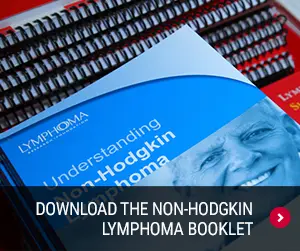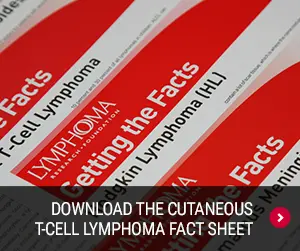
What is Lymphoma?
Cutaneous T-Cell Lymphoma: Treatment Options
Many factors are considered to identify the most appropriate treatment for each patient, including the extent of skin involvement, the type of skin lesion, and whether the cancer has spread to the lymph nodes or other internal organs.
For mycosis fungoides, treatment is either directed at the skin or the entire body (systemic). Many patients live normal lives while they treat their disease, and some are able to remain in remission for long periods of time.
Since Sézary syndrome is systemic, one in which both blood and skin involvement is noted, it is usually not treated with skin-directed therapies alone. Treatments may be prescribed alone or in combination to achieve the best long-term benefit.
- Skin-Directed Therapies are generally used for earlier stage disease and are typically useful for patches and limited plaques.
- Topical treatments such as corticosteroids, retinoids, imiquimod, or chemotherapy. The following topical treaments have been approved by the U.S. Food and Drug Administration (FDA):
- Bexarotene gel (Targretin)
- Mechlorethamine gel (Valchor)
- Local radiation
- Ultraviolet light
- Topical treatments such as corticosteroids, retinoids, imiquimod, or chemotherapy. The following topical treaments have been approved by the U.S. Food and Drug Administration (FDA):
- Systemic Treatment may be used in more advanced stage disease and in those with earlier stage disease in whom skin-directed therapies did not help, were not tolerated, or are not available. Systemic treatments include extracorporeal photopheresis (ECP) and/or single-agent or combination chemotherapy regimens, which may include:
- Acitretin (Soriatane)
- Bexarotene capsules (Targretin)
- Interferons (alpha or gamma)
- Methotrexate tablets (Trexall)
- Romidepsin (Istodax)
- Vorinostat (Zolinza)
To learn about treatments under investigation for CTCL, download the Cutaneous T-Cell Lymphoma Fact Sheet.


